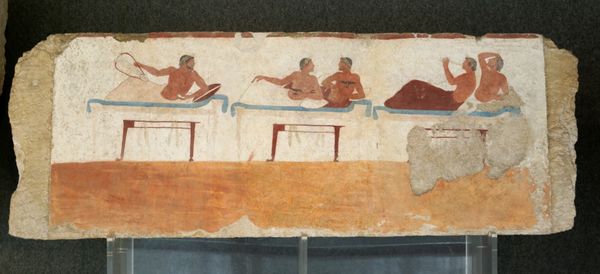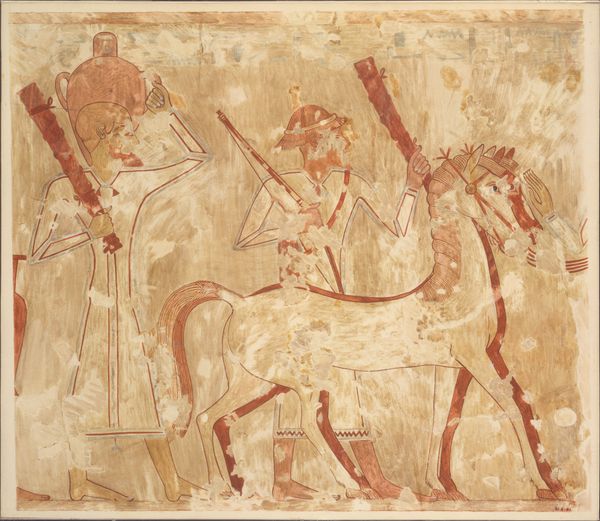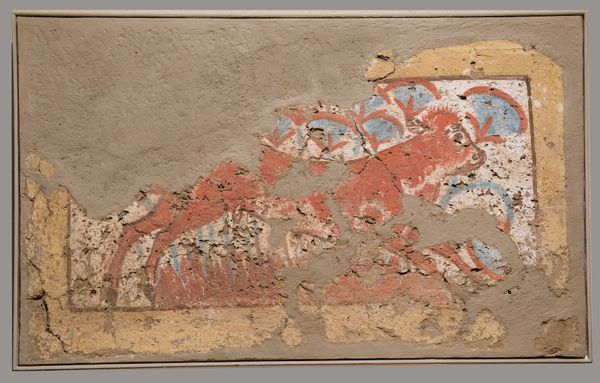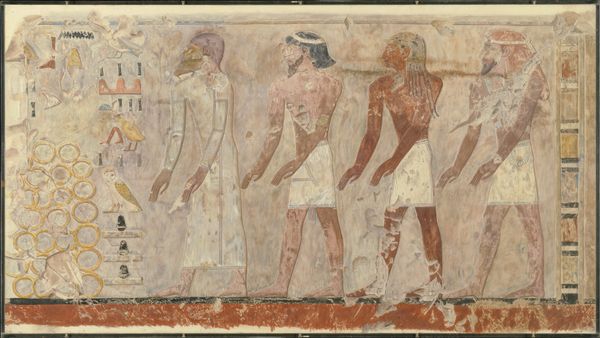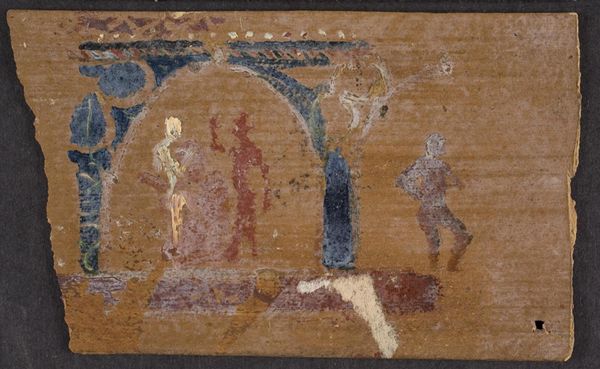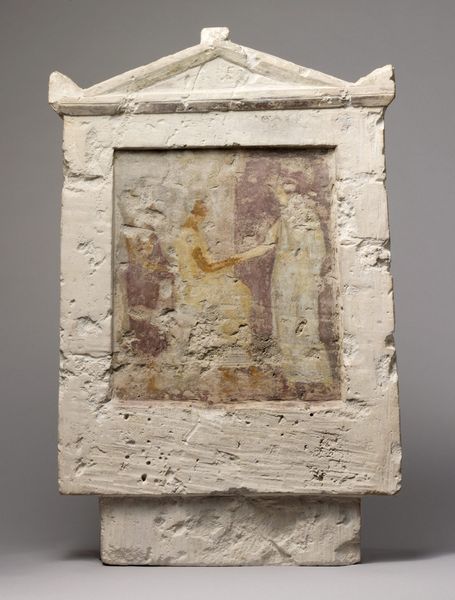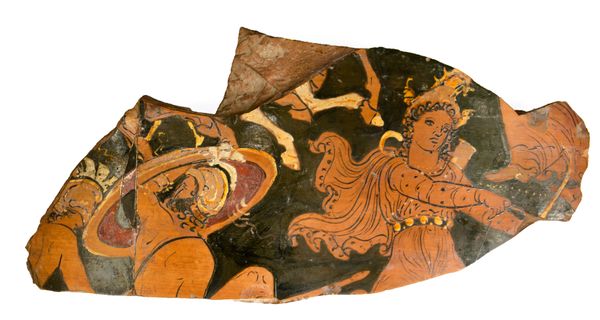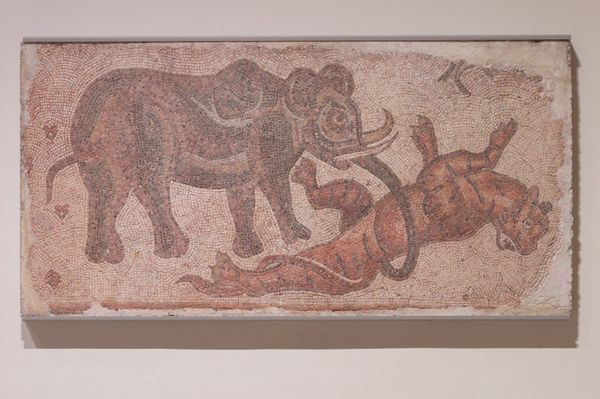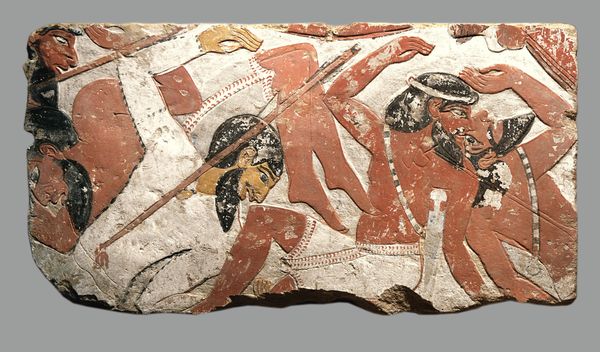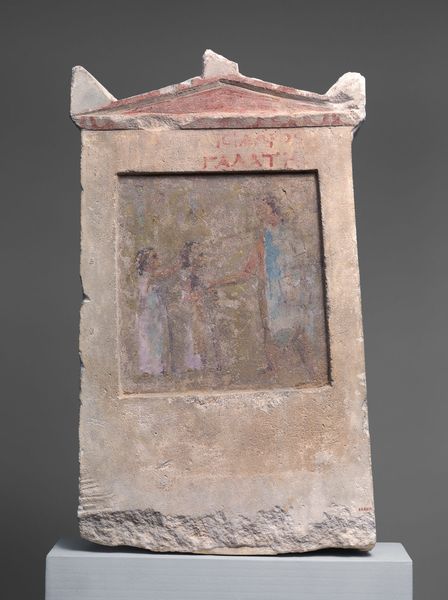
fresco
#
greek-and-roman-art
#
landscape
#
figuration
#
fresco
#
ancient-mediterranean
Copyright: Public domain
Editor: Here we have a fresco fragment dating back to 470 BC, entitled “Tomb of the Diver in Paestum, Italy: East Wall.” I'm struck by how informal it feels, almost like a snapshot of a banquet. What do you see in this piece, looking at it from a historical perspective? Curator: It’s tempting to see informality, but we must be wary of projecting modern notions. These images functioned within very specific funerary rites. Ask yourself, what purpose did such imagery serve for the patrons and viewers of the time? How does depicting a symposium inside a tomb change the very perception of it? Editor: That’s a good point. So, it’s not just decoration; it's about the function it played. The symposium scene perhaps was intended to comfort, by evoking a sense of celebration instead of mourning. Curator: Precisely. It provides us a peek into ancient Greek customs, ideas of afterlife, and status symbols that existed in this time. What does a symposium—exclusive drinking parties that served as important venues for socio-political networking—in a tomb tell us about societal concerns during the 5th century BC? It underscores the complex role of art, then and now, to both reflect and shape our values. Editor: So, by showing this familiar scene, maybe they’re trying to negotiate death, framing it as part of continued social life? Thanks, this helped me see it wasn't just an artistic scene but actually reflects historical cultural contexts of Ancient Greece. Curator: And it reminds us that our interpretations are always shaped by the institutions and assumptions we bring to the work. Keeps me on my toes, too.
Comments
No comments
Be the first to comment and join the conversation on the ultimate creative platform.

